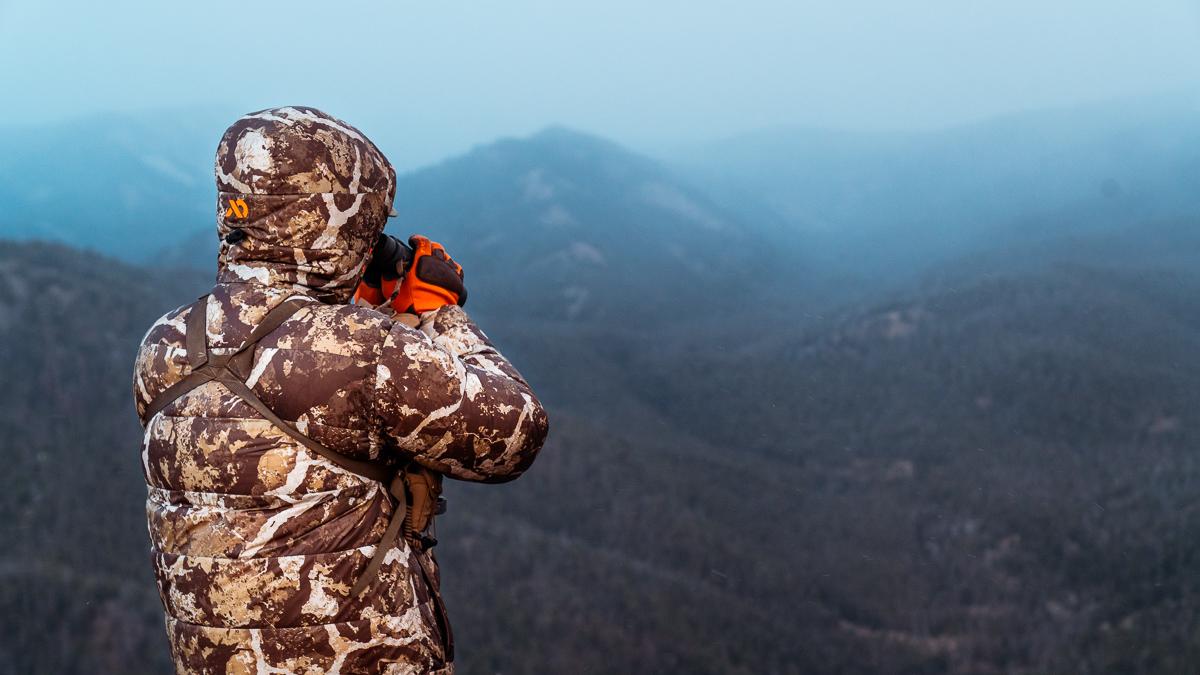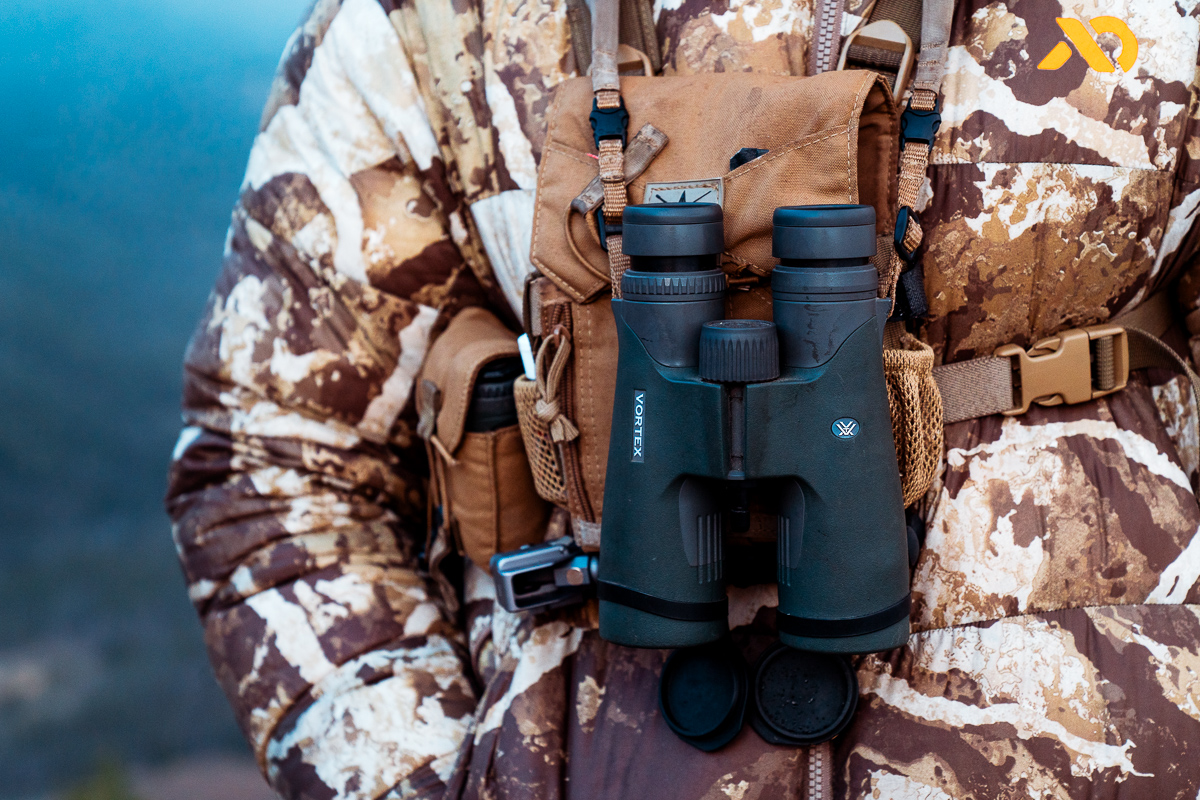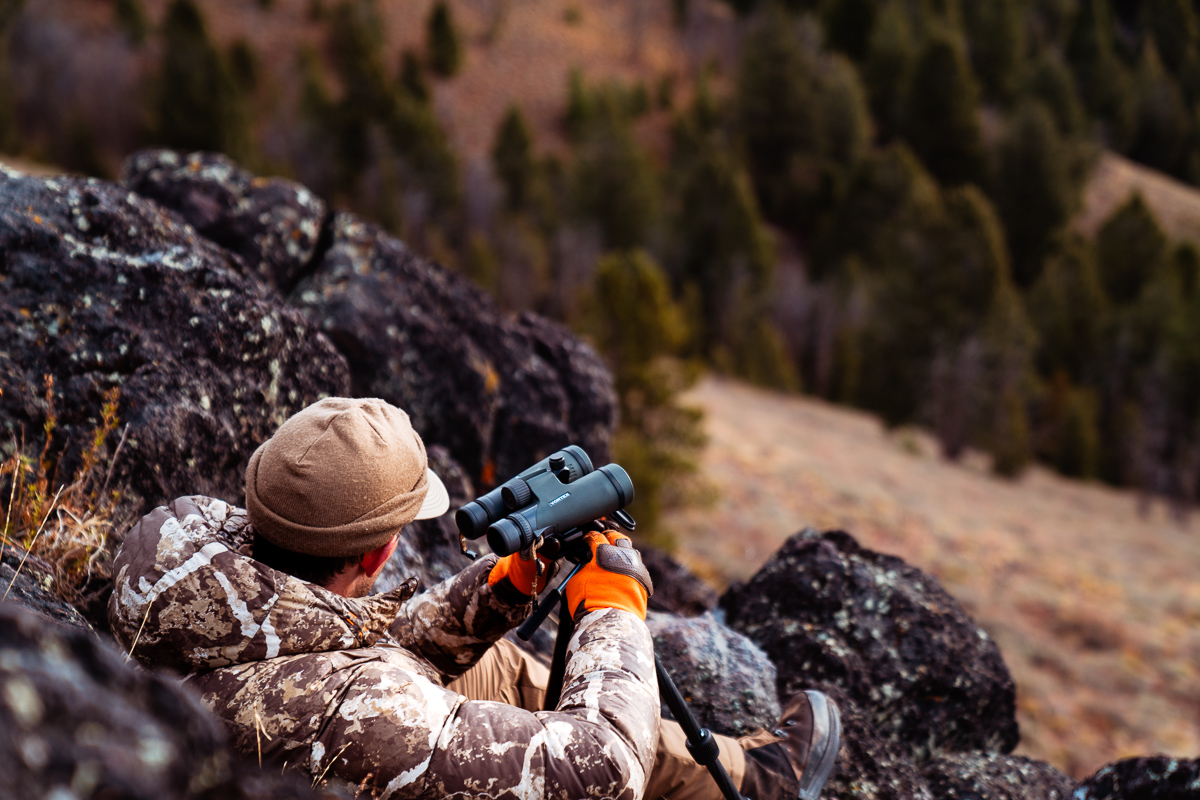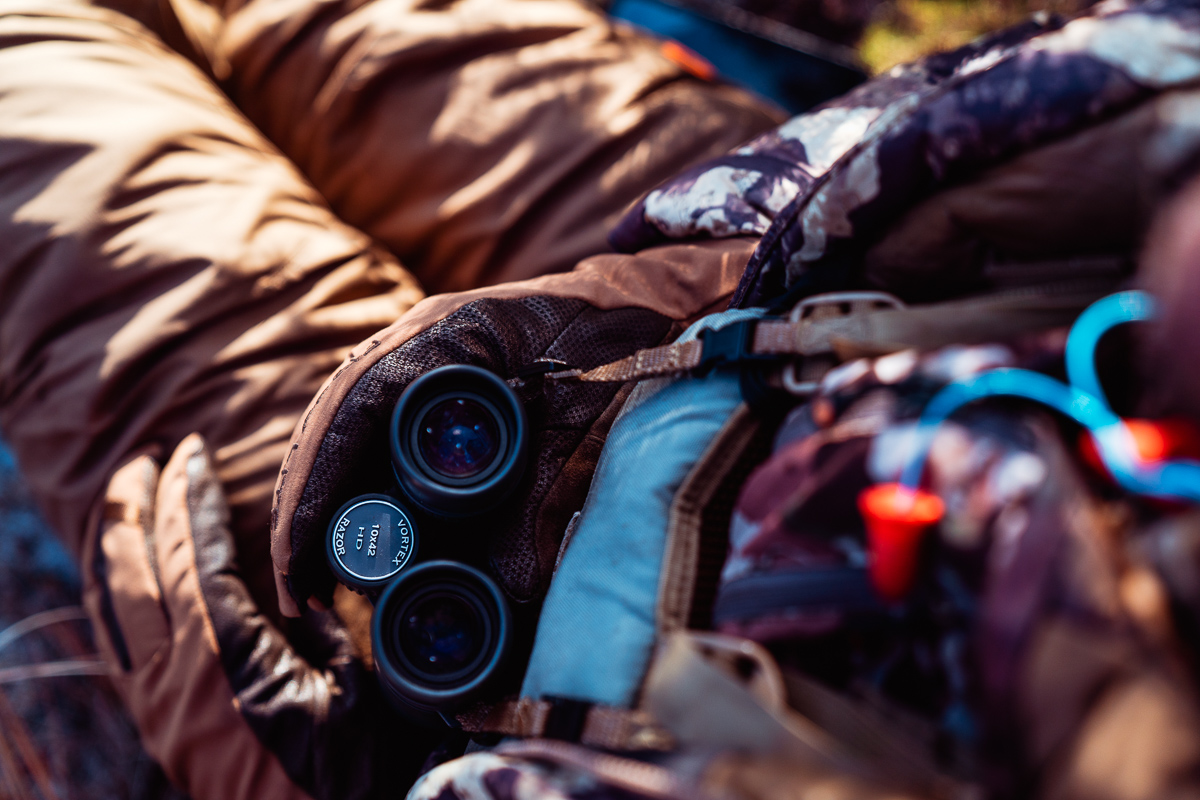
How to Pick the Best Size Binoculars for Big Game Hunting - Part 1
By Josh Kirchner
When it comes to Western hunting, one of the biggest tools in a hunter's toolkit is their optics. They give us the ability to look over vast amounts of country in a calculated fashion. All the while we save some boot leather and are being non-intrusive to the animals we're looking for. Quality optics help us see what does not want to be seen, and for a hunter, that is a huge benefit, and puts the ball in our court.
But how do we begin to wade through the morass of options for different sizes, features and options for binoculars on the market? Is it really worth it to take out a second mortgage for a quality pair of binoculars? The answers to these questions are complicated, but I'll break down how to approach getting the right binos for the job and your budget. We'll give you a lot to think about, and then we'll synthesize everything.
Spoiler Alert: The 10x42 is still our favorite do-it-all pair of binoculars if you're looking for just one pair of binos. Find out why we think the 10x42 is the jack of all trades size below.
Binocular Anatomy 101
In order to better understand binoculars and how to pick the right tool for the job, it's important to first understand the anatomy of binoculars.
Magnification
Magnification seems to get all the press with binoculars. When you see something like 10x or 12x etched in an optic, that is the magnification power that comes from the ocular lens (eyepiece). This means that for a 10x, the image through the binocular will be magnified by 10 of what you'd see with the naked eye. So, the advantage of having a 20x binocular in big country is pretty clear. The rub there is bigger magnification means a bigger, heavier binocular. The most popular magnifications for western hunting are a 10x and 12x.
Objective Lens
The second number that comes after the magnification refers to the size of the objective lens. It would be the "42" in a 10x42 pair of binos. That 42 describes the size in millimeters of the objective lens. This is the lens that is farthest from the eye, or closest to the object one is looking at through the optic. Many times it is the bigger end of a binocular one looks through. The objective lens is responsible for how much light gathering capability an optic has. For example, a 42mm objective lens is going to gather less light than a 50mm. Light gathering capability is crucial for first and last light glassing, so this is something to definitely pay attention to. Similar to the magnification though, a bigger objective lens means a bigger heavier optic.
The Glass
Every brand will have its' own glass, and they are not all created equally. More expensive binoculars are going to have better, higher quality glass that will make for a more crisp image, and likely be better in low light situations. Whatever brand you choose, understand that the glass is literally what you are paying for, and paying for a higher quality optic is always better, even if it isn't realistic with your budget.
Criteria for Picking the Right Sized Binoculars
There are many ways to skin this cat, but we're going to give you some criteria to consider, then give you our recommendations based on our experience. If large magnification binoculars weren't heavy, bulky and annoying to carry around all day, picking the right binos would be easier.
Terrain, Species and Type of Hunt
Hunting Elk in September in the timber is different than a late October open country hunt, which is different than hunting pronghorn in the wide open desert, which is different than a coues deer hunt in January. There isn't one pair of binoculars that is ideal for every hunting situation, but there are better and worse choices.
Open Country hunting
Big wide open spaces are going to be best tackled with bigger binos. Because one can often sit down in one spot and look for miles in almost every direction, having a higher magnification binocular is going to allow that person to really scan the country effectively and efficiently. Something on a tripod in at least the 10-12x range will work just fine, but 15x will work better. Like we said above though, bigger binos are heavy, and if they weren't, picking the right bino would be easier. This is the rub with the extra reach in magnification. Will you carry the extra weight for extra magnification or will you settle for something smaller and just move around more via hiking? That's all up to the user.
Thick Brush and Timber Hunting
In a different light, some might find themselves hunting in much more densely vegetated country. Hunting in thick brush and timber comes with much more limited visibility, unlike the open country we covered above. This means that a hunter doesn't need to be carrying around as big of a binocular, simply because they won't need to be glassing as far. An 8x or 10x magnification would serve them well. These are going to offer enough reach to handle said country, while at the same time provide an excellent field of view. Using a higher magnification in these areas would be more of a hindrance both on the field of view front and the weight/bulk front. One wouldn't have nearly the field of view, which means that target acquisition would suffer in tighter situations. Then one would be carrying much more weight for a bino that they just don't need. There's no reason to bring a gun to a knife fight.
Calling Vs. Spot and Stalk
Along with the terrain a person will be hunting, hunting tactics will also have an effect on what binocular someone may or may not choose. For instance, calling and spot and stalk tactics will excel with different tools. A spot and stalk hunter's game is spotting animals from a far and making a calculated stalk to close the distance. Higher magnifications will yield better results in this scenario. 10x42 or 12x50 binoculars mounted on a tripod are a great route. They are lightweight enough to wear on the chest for active hunting scenarios, but still have enough power to reach out and touch something far away. For the hunter focused more on calling, something smaller will be best. Due to the close quarters they'll likely be hunting, a 12x or larger binocular is really going to be overkill. They'd be larger, heavier, and severely limit field of view, making it harder to pick up game close by. An 8x or 10x, no larger, would do great for the hunter looking to call something into spitting distance, but still give their vision the edge that binoculars do. And often times for archery elk, you may do a combination of spot and stalk and calling tactics, so having an optic that is suited for both is ideal.
Go big or Go Home
Bigger is better right? Not always. While it may sound like a no brainer to carry the biggest and best binoculars there are, these choices come at a price. Bigger binoculars are just plain bigger. This means they take up more space and are heavier. For someone carrying their binoculars on their chest, this is a recipe for a soar neck. Larger magnification binoculars also are going to be much better suited for use on a tripod. With a higher magnification, your shake will be much more visible. That is going to make it even harder to freehand and spot animals. So, not only will you have more weight with the heavier binocular, you'll also need to carry a tripod. So go with the right magnification and size bino for the job, not the biggest.
Notice a Pattern?
If you haven't noticed the pattern yet, let me point something out. There is one magnification of binocular that was mentioned in every hunting situation. The 10x binocular is a jack of all trades and one that we'd recommend to anyone and everyone in all situations. Of course there may be more specialized tools for a certain scenario, like 15x mounted on a tripod in coues deer country, but the 10x is the one tool that can do it all. It's a one stop shop binocular.
Buy the Best You Can
And now we need to talk green. Everyone's budget is different. Nonetheless, it's an area that needs to be taken into consideration before buying binoculars. Binoculars can range in price from a couple hundred dollars all the way to a couple thousand dollars. That's a lot of range and begs a question. What are you actually getting with higher end binoculars? The higher end binoculars are going to have much higher quality glass in them, literally. This is going to offer a much more crisp picture, as well as more eye relief. The eye relief is what will allow one to look through binoculars for extended periods of time without running up the Advil bill. In lower end optics there is going to be less eye relief, which can cause headaches. Luckily, there are a wide variety of options and prices for one to choose from. Everyone can be happy.
Closing Thoughts
At the end of the day, no matter what your budget is, country you're hunting, or your hunting style, there is certainly a binocular out there that will fit your needs. If you only buy one pair of binoculars, get a pair of 10x42's and get the best pair you can afford. And while it may be somewhat daunting with all of the options out there, this is also a good thing. It lets one really mold a binocular to them, which is one of the things that is so cool about the day and age we live in. There is endless amounts of gear, and quality gear, out there begging to be tried out. With these tips in mind, you'll surely be better armed to get sized up with the right binocular for you. Now get to lookin!
Keep your eyes out for Part 2 of How to Pick the Best Size Binoculars for Big Game Hunting. In it, we'll break this down even farther talking about our top bino picks by species and budget.
